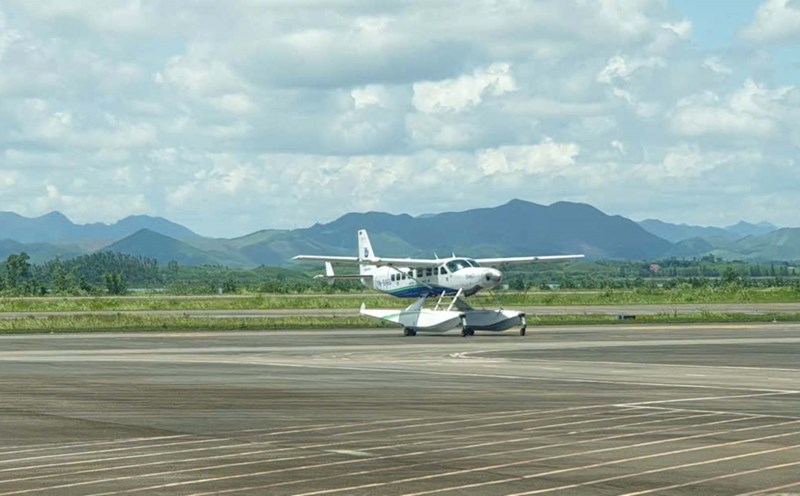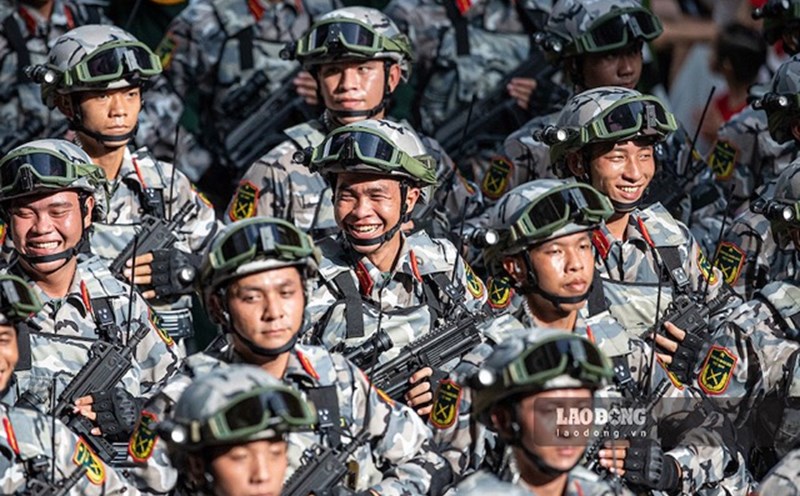From the army chief to the revolutionary base
These days, the memory of the August Revolution in 1945 flows back into the hearts of people in the Northwest highlands. Through the stories of the people, we know Mr. Tran Dinh Khanh - former Chief General Luong Ca - who devoted 500 tons of wheat warehouses and dozens of buffaloes and cows to raising cadres and soldiers during the resistance war.
Following a small road, both sides are covered with red flags with yellow stars in Viet Hong commune, Lao Cai province, the reporter was present at the hidden stilt house at the foot of Na mountain. Welcoming us was Mr. Hoang Cu - who has been attached to and looks after the relic for many years.
When mentioning Mr. Tran Dinh Khanh, his eyes lit up with mixed emotions and pride: "The story of Mr. Khanh has not ended for a whole month. Although he is a landowner, he lives in harmony, helping the poor, and is devoted to the country. When the revolution came, he was willing to give his land and assets to support the army and build a base. That is something that not everyone in that position can do.
According to the village elders, before the August Revolution, Mr. Khanh managed a large area from Viet Hong, Viet Cuong, Van Hoi, Hien Luong to Luong Thinh, Hung Khanh in the past. When the revolutionary movement spread, he decided to choose the path to stand on the people's side, turning his stilt house into a "capital" for the Au Co tourist team and officers from the Viet Bac battle zone to operate.
The people of Tran Yen (old Yen Bai province, now Lao Cai province) at that time were not many, only a few dozen houses, but all were devoted to the revolution. Whoever has contributed anything: Rice, corn, buffalo and cow... The whole community unanimously raises troops and protects cadres.
"In Mr. Khanh's house, there are always tourists at the rented house, some people pick rice and wind the rice. The buffaloes and cows are released in the forest, if the revolution needed them, they would just be caught and slaughtered, Mr. Cu said as if he had heard from those who had gone before.
Not only a place to raise and hide, Mr. Khanh's house is also a place for gathering and making plans. The Phu Tho - Yen Bai Inter-provincial Party Committee was established here. Mr. Khanh's name is associated with the decisions that opened the uprising to gain power in the midland area.
Red address for traditional education
With his great contributions to the revolution, in October 1945, Mr. Tran Dinh Khanh was appointed Chairman of the Yen Bai Provincial People's Committee. In January 4, 1946 he was elected by the people as a delegate to the First National Assembly - becoming one of the first two representatives of Yen Bai province to the National Assembly. In the following years, he took on the responsibility of Chairman of the Yen Bai Provincial Resistance Committee, Member of the Resistance Committee of Zone 10 and Chairman of the Yen Bai Provincial Administrative Resistance Committee.
Notably, on September 4, 1995, Mr. Khanh's stilt house was recognized by the Ministry of Culture and Information as a National Revolutionary Historical Site, belonging to the Van Military Region Relic Cluster. Since then, the house has become a red address, a place to foster national pride for the next generation.
"Thanks to the attention of all levels, the Khanh mansion house is preserved and maintained. Every year, thousands of visitors, most of whom are students, come to learn about history and listen to revolutionary stories, said Mr. Hoang Cu.
Mr. Nguyen Tien Chien - Chairman of the People's Committee of Viet Hong commune - shared: "This is a special revolutionary address of the locality. We identify, preserve and promote historical values associated with the development of cultural - experiential tourism as an important direction. Therefore, the commune and relevant agencies are focusing on restoring and combining the recreation of the resistance space to both educate tradition and create attraction for tourists.
At the same time, we focus on exploiting the advantages of rural landscapes, rice fields, hilly gardens, and unique customs and practices of the people to form a community tourism model. People will be both the subject of preserving historical memories and the friendly host to welcome tourists.
Many pre-uprising cadres still remember the scene where Mrs. Hoang Thi Theu - Mr. Tran Dinh Khanh's wife gave him 4 buffaloes to slaughter to raise troops. That image, for many people at that time, was a symbol of the silent sacrifice of a patriotic landlord family, inclined to the day of victory.











